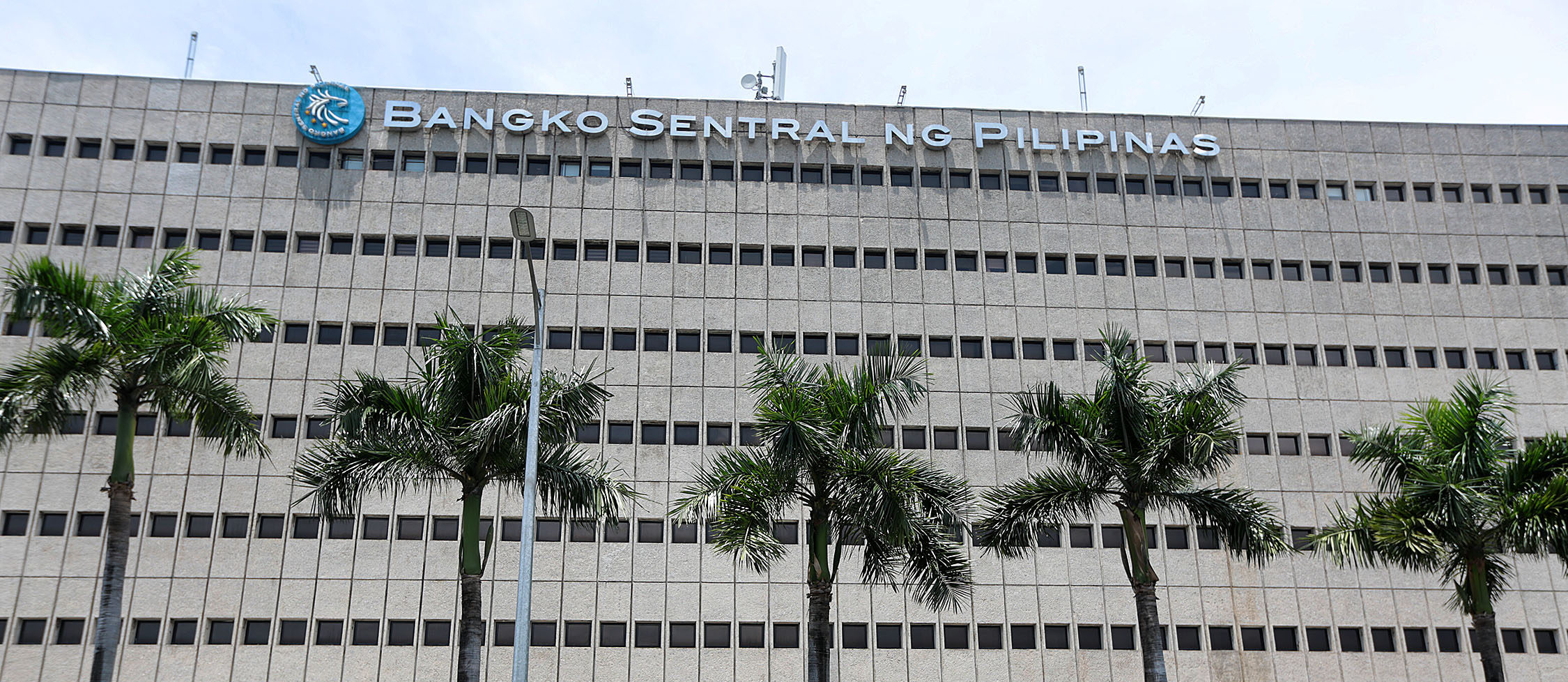Oxford Economics: Interest rate cuts to help PH grow fastest in Asean-5 in 2020

Bangko Sentral ng Pilipinas (BSP). INQUIRER FILE PHOTO / GRIG C. MONTEGRANDE
MANILA, Philippines–The Bangko Sentral ng Pilipinas’ (BSP) string of interest rate cuts this year augur well to economic growth, such that UK-based Oxford Economics expects the Philippine economy to expand the fastest among Asean-5 countries next year.
“We forecast a growth turnaround in economies where policymakers have been quick to jump aboard the easing train and have a willingness to ease further, such as India and Philippines,” Oxford Economics head of India and Southeast Asia economics Priyanka Kishore and head of Asia economics Louis Kuijs said in a Dec. 2 report titled “Asia-Pacific: Policy levers key to growth in 2020 amid slowing China.”
So far this year, the BSP cut key rates by a cumulative 75 basis points (bps).
Last week, Governor Benjamin E. Diokno said the BSP may still cut interest rates when its Monetary Board tackles the monetary policy stance on Dec. 12.
Prior to last week, Diokno had said the BSP was already done with interest rate cuts.
The Monetary Board—the BSP’s highest policy-setting body—kept the policy rate at 4 percent last Nov. 14 amid easing inflation and slower growth at the start of the year.
Last year, the BSP hiked the policy rate by a total of 175 bps to 4.75 percent after headline inflation hit a 10-year high of 5.2 percent due to new or higher excise taxes slapped on consumption under the Tax Reform for Acceleration and Inclusion (TRAIN) Act, skyrocketing global oil prices, and domestic rice supply bottlenecks.
Oxford Economics noted that after India and Indonesia, the Philippines was among the most aggressive economies in cutting interest rates this year.
As such, Oxford Economics projected the Philippine economy to grow by 5.8 percent this year and 6 percent next year, although below the government’s target ranges of 6-7 percent in 2019 and 6.5-7.5 percent in 2020, respectively.
Oxford Economics’ forecasts nonetheless showed that its gross domestic product (GDP) growth projection for the Philippines next year was higher than those for Indonesia (4.9 percent), Malaysia (4 percent), Singapore (1.4 percent), and Thailand (3 percent).
As for inflation, Oxford Economics sees the rate of increase in prices of basic commodities in the Philippines to slow to 2.5 this year before slightly picking up to 2.8 percent next year—both still within the government’s 2-4 percent target range.
Oxford Economics also projected the Philippines to record a narrower current-account deficit equivalent to 1.5 percent of GDP this year before again widening to 2 percent of GDP next year.
The current-account deficit widened to 2.6 percent of GDP in 2019 as imports surged, in the process weakening the peso last year.
Also, Oxford Economics projected the budget deficit at 2.7 percent of GDP this year and 3 percent next year—both within the 3.2-percent-of-GDP ceiling.
The Cabinet-level Development Budget Coordination Committee had programmed a wider budget-deficit cap for 2019 and 2020 as the government wanted to ramp up spending on public goods and services, especially big-ticket infrastructure projects under the Duterte administration’s ambitious “Build, Build, Build” program.